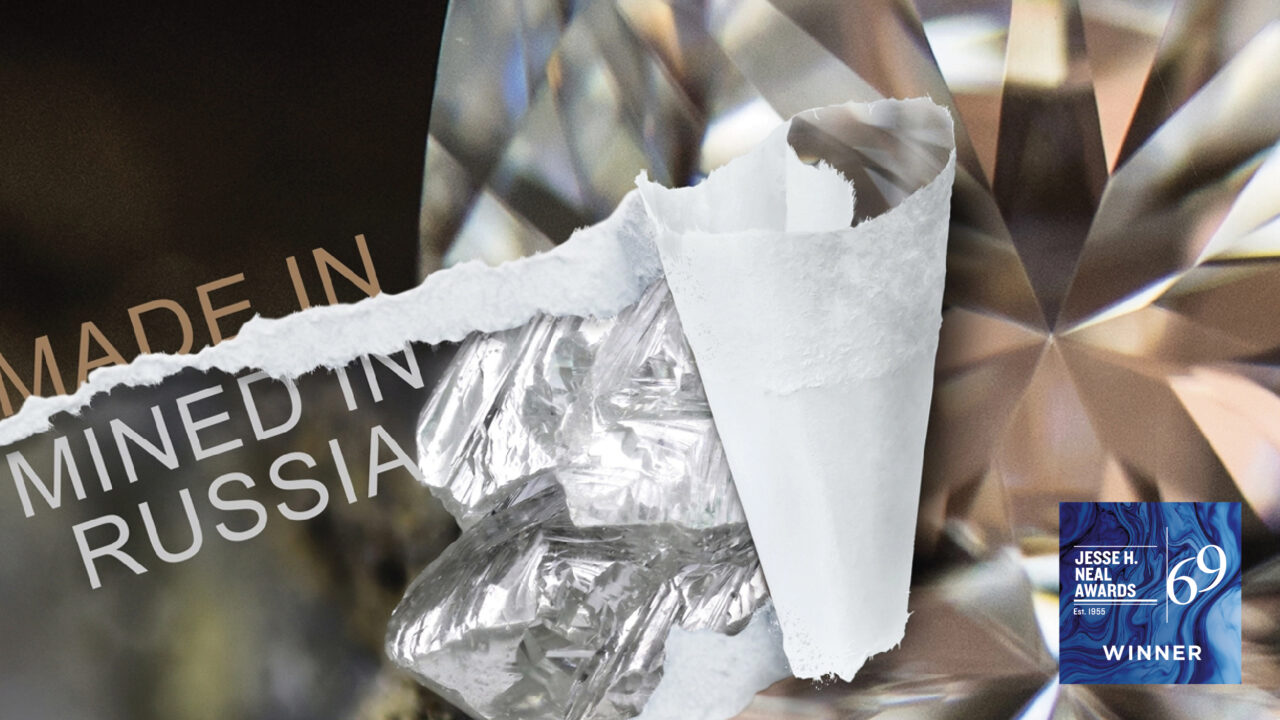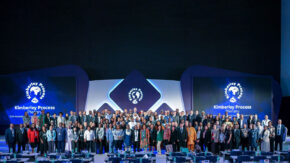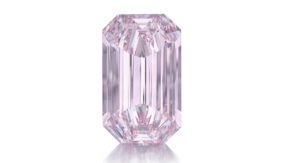The Russia crisis is forcing the diamond trade to take responsible sourcing to the next level. Considering the industry’s long history of dealing with reputational challenges, the ongoing war in Ukraine adds a new dimension.
On February 24, 2023, the first anniversary of Russia’s invasion of Ukraine, leaders of the Group of Seven (G7) nations reaffirmed their commitment to “strengthening the unprecedented and coordinated sanctions and other economic measures… to further counter Russia’s capacity to wage its illegal aggression.”
Among the steps outlined, the G7 — Canada, France, Germany, Italy, Japan, the UK and the US — will work collectively on further measures relating to Russian diamonds, both rough and polished, given the “significant revenue that Russia extracts from the export of diamonds,” the group said in a statement.
Those are broad and non-definitive declarations; an expression of intent to work toward new measures relating to diamonds rather than enacting them immediately. The process to create and implement regulations is expected to take a few months, stressed the Jewelers Vigilance Committee (JVC), which will advise the US Department of State on industry matters relating to the sanctions.
For now, the G7 announcement triggered discussions within the trade about the nature of such additional measures. The sanctions would likely target Alrosa, the world’s largest rough producer by volume, which is 33% owned by the Russian Federation.
Substantial transformation
To be specific, the new bans would address the issue of “substantial transformation” — a pathway through which the current US sanctions still allow Russian-origin diamonds to enter the US if they are cut and polished in a third country, as explained by the JVC.
Some argue that such imports are not legal even under the current US sanctions. But that’s a simplistic approach, argues a former US Department of Treasury official who requested anonymity. The key question, he stresses, is whether Alrosa still has an interest in the goods. “Just because they came from Alrosa doesn’t mean they’re still subject to sanctions if there is a legitimate arm’s-length sale that breaks their interest,” he explains.
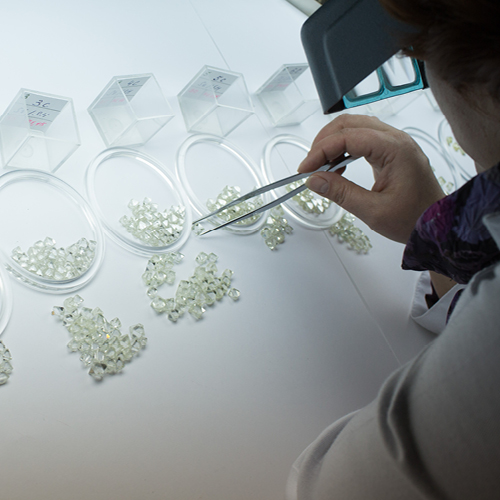
diamond sorting. (Alrosa)
For example, if Alrosa sold its rough on consignment to a third-party manufacturer, such polished would be subject to the current sanctions. Or if the Russian miner sold its rough through partnerships to gain a share of the profit from the resulting polished — as some miners are doing — that polished product, too, would be ineligible for import to the US.
However, Alrosa typically sells its rough and moves on. Therefore, as it stands, if a manufacturer buys rough from Alrosa and manufactures it elsewhere, those goods can technically be brought into the US. The stones might be cut, for example, in Belgium, India, Israel or the United Arab Emirates (UAE), countries that haven’t implemented sanctions on Russian diamonds.
Regulating traceability
That has led the major jewelry chains, brands, and conscious independents to apply their own chain-of-custody standards to ensure their supply was not sourced in Russia. Now, the State Department wants to regulate the trade so that such guidelines are applied across the industry and in key international markets spreading to the G7 countries. They would likely extend to the European Union, and notably Belgium, by association.
It is still too early to say exactly what such regulations would encompass, but they will likely include some aspect of traceability, says Sara Yood, legal adviser to the JVC. But the State Department, along with its G7 colleagues, still needs to iron out what that might entail.
Would it require companies to adopt one of the numerous source-verification programs that have been developed within the industry? In such a case, technology such as blockchain or QR codes will play an even more important role in the trade. Or perhaps a statement on the invoice declaring where the goods come from would suffice. Some might suggest the World Diamond Council’s (WDC) System of Warranties (SoW) would be an appropriate tool. However, the WDC’s self-regulation plan hinges supply to Kimberley Process (KP) compliance — a scheme for which Russia is still a member.
There are numerous variations and combinations of these programs that might be considered for the new blueprint. It’s little wonder that it will take months, rather than weeks, to formulate and implement.
This time it’s different
There is also the question of whether such measures will apply only to Russian-origin diamonds or to the full spectrum of supply.
It is not the first time that the issue of substantial transformation has — or should have — challenged the industry. The US implemented sanctions on Zimbabwean diamond entities and rough supply from the country as far back as 2011, and those are still in place today.
They were enacted after the Zimbabwe government seized the Marange mine fields in a 2007 operation that resulted in more than 200 deaths of artisanal miners working the fields, according to Human Rights Watch (HRW).
If the US government considered substantial transformation relating to the Marange goods, it did so on the quiet. Besides, it barely occurred to the trade, or its media outlets, to question it in a meaningful way. That was likely because Zimbabwe accounts for a small percentage of global rough supply. It could also have been because traceability systems weren’t available to monitor Zimbabwe’s resulting polished back then. Manufacturers at the time maintained it was nearly impossible to separate supply from their various rough sources in the production process.
Today’s challenge regarding Russian goods is different because Alrosa accounts for such a large proportion of global supply — 27% by volume, according to Rapaport estimates based on 2021 KP data. In addition, the industry has gradually been working on source-verification and traceability programs that make it possible. The Russia crisis has fast-tracked those efforts, while enacting traceability systems into regulation is a new element that might not have been considered before.
Filling the gaps
Indeed, the diamond industry’s road toward responsible sourcing has been a long one. And it is one that probably doesn’t have an end since there will always be fresh challenges, new elements to consider and improvements to be made.
The journey arguably began with the establishment of the KP in 2003. The scheme was created to monitor the cross-border flow of rough diamonds to give assurance they didn’t fund rebel groups engaged in civil war. However, the conflict-diamond definition limited (and still restricts) the KP’s scope, allowing diamonds mined in violation of human rights — or through violence, that fund terror, or result from other atrocities — to fall through the cracks.
Such loopholes came to light with the Zimbabwe incident, since it was a government entity, not a rebel group, that was the perpetrator and benefited from diamond profits through its rogue actions. In addition, that government was part of the KP and managed to lobby its way not only to remain one but to serve as its chair for 2023.
The industry was therefore forced to look elsewhere to provide ethical assurances to consumers, who were becoming increasingly sensitive about responsible-sourcing issues. The Responsible Jewellery Council (RJC) was founded in 2005 to tackle the broader range of issues that were already missing in the KP back then. In the same year De Beers launched its Best Practice Principles (BPP) to steer its stakeholders to apply best practices in other areas of the industry not covered by the KP to ensure an ethical diamond supply, the company explains on its website.
Both the RJC and De Beers’ BPP relied on companies to meet their respective standards and encouraged members — at least within the RJC structure — to do business with each other to ensure a responsible supply chain.
Signet Jewelers, which was heavily involved in the RJC’s establishment and still serves as its chair, announced its Responsible Sourcing Protocols for gold, tin, tungsten, and tantalum in 2011, and its protocol for diamonds in 2017. These were standards that suppliers to Signet — the largest jeweler in the US — had to meet, and they strongly encouraged membership in the RJC.
Through these programs and others, the industry was able to tackle a broader range of issues relating to responsible sourcing. These focused not only on the industry’s distribution channels, but also touched on other pressing matters such as the environment and equality, which were becoming more important to consumers. The trade also addressed governance and compliance, updating its standards according to the requirements of banks and regulators after the 2008 financial downturn.
Diamonds with provenance
However, while these initiatives relied on commitments by members to meet a set of standards, they didn’t zoom in on individual diamonds. It was always questioned whether traceability chain-of-custody programs could be enacted for diamonds, considering they change hands many times before reaching the consumer.
In the past five years, technology has changed that perception and reality. Blockchain enabled companies to create a digital footprint and track a diamond’s transactions as it changed ownership. It empowered companies to know their suppliers, and their suppliers’ supplier, so that the retail jeweler can sell with confidence.
Programs by De Beers, Sarine Technologies, the Gemological Institute of America (GIA), Everledger, iTraceiT, and others, have been in the works in the past few years, even if the industry has been slow to adopt them. We will examine these tools in greater detail in the next installment of our three-part series on the industry’s Russia crisis.
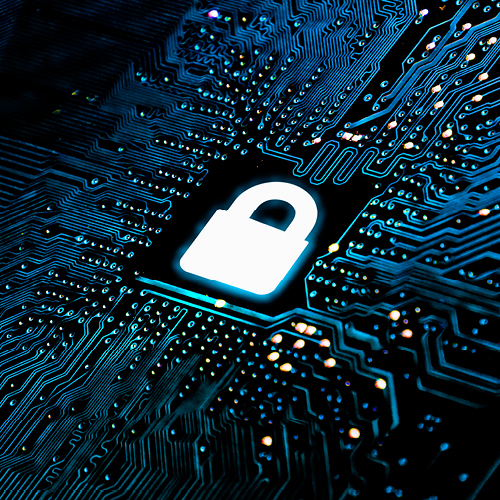
Through them, companies can tell the story of their diamond supply from mine recovery, through cutting and polishing and jewelry wholesale, to retail, giving assurance they not only did no harm but they made a positive contribution to society along the way.
Stones with such provenance are expected to sell at a premium, even if they currently may not. They demonstrate that the piece of jewelry adds value through its values in the same way that the 4Cs differentiate qualities of a diamond. Indeed, De Beers’ 2021 Diamond Insight Report highlighted that sustainability considerations rank on par with price and design for global consumers when purchasing diamonds.
A majority were willing to pay more for natural diamond brands that could demonstrate they operated in an environmentally and socially responsible way, the report revealed.
Brand values
Ultimately, it is the luxury brands that are pushing and leading this agenda, because it makes economic sense. In addition, they, more than others, face reputation risk if their supply does not meet the appropriate ethical standards. These brands are built on the stories they tell, and their values are a core element of that story.
That, along with the know-your-supplier initiatives already outlined, is forcing the rest of the industry to adopt a more brand-like mentality. This will ultimately result in a major shift within the diamond market toward stronger branding moving forward.
Regulating such requirements will accelerate the industry’s adoption of chain-of-custody programs, regardless of the final nature of the sanctions. The new measures will highlight the value in differentiating diamonds with desirable provenance from those without.
Rubber-stamping solutions
That the announcement came from the G7 and not just the US is significant. It forces other centers to follow the lead set by the US in the past year. It puts pressure on the EU — notably Belgium, traditionally the largest destination for Russian diamonds — to apply sanctions that it has been hesitant to enact until now. The Antwerp trade has contended that these goods would enter the market anyway. And they have in the past year, as outlined in the February Rapaport Research Report. From the outside, it appears Antwerp also fears losing market share to other centers that would continue to trade freely in Russian goods — notably India and Dubai.
Antwerp welcomed the G7 announcement, pointing to its broader and more effective reach than had the EU operated alone.
“With controlled access to 70% of the market, the G7 has the power to create a fully traceable and waterproof system that has real impact on the market,” notes a spokesperson for the Antwerp World Diamond Centre (AWDC). “AWDC believes this is a step in the right direction, and we will support the ongoing efforts to complete this mission.”
The spokesperson adds: “It speaks for itself that the success of such a solution lies in India, where 95% of diamonds get polished. We will always resist against a simple rubber-stamping solution.”
Premium opportunity
Perhaps a broader view is required. Segments of the trade and companies in these markets should view the prospective sanctions as an opportunity to differentiate themselves in the responsibly sourced stream of the market. While the new measures considered by the G7 will target Russian diamonds, they need to address the issue of substantial transformation regardless of the diamonds’ origin.
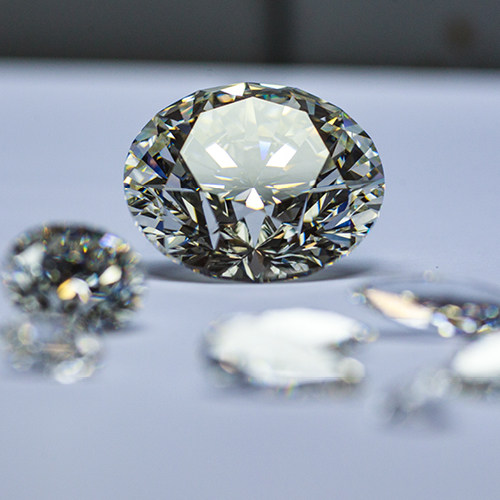
from Alrosa’s
polishing
division. (Alrosa)
Furthermore, injecting traceability programs into regulation provides an opportunity to encompass a wider range of issues, such as environmental, social and governance (ESG), into the discussion. These may be less immediate challenges, but they will likely have longer-term relevance, well after the war in Ukraine is resolved.
The Russia crisis demands urgent action by government and the trade. The sanctions that are in the works will compel companies in those countries imposing them to be a force for good.
The hope is that they will steer the industry toward building value around provenance. That would ultimately result in a premium for the values those diamonds represent.
This article first appeared in the March edition of the Rapaport Research Report. Subscribe here.
Image: David Polak/shutterstock
